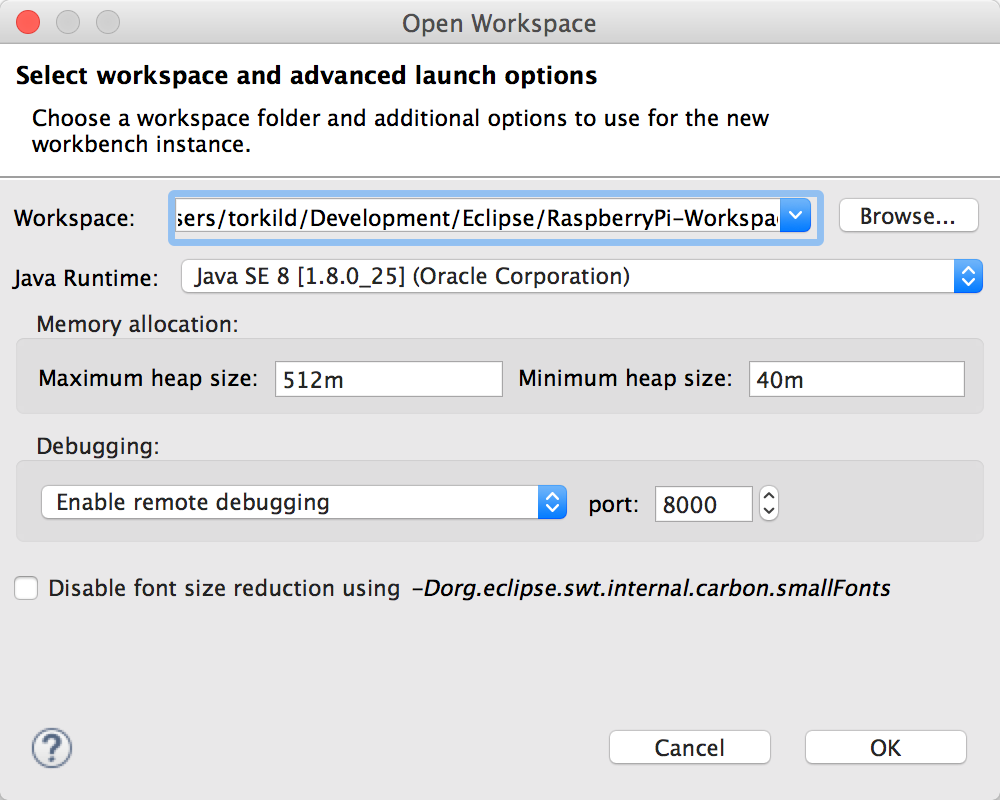- Installing Java 8 and Eclipse on Mac OS X. This page tells you how to download and install Java 8 and Eclipse on Mac OS X, and how to configure Eclipse. Installing Java 8. Go to the Oracle website. You'll see something like this.
- The Eclipse Installer 2020‑09 RC1 now includes a JRE for Mac OS X, Windows and Linux. Try the Eclipse Installer 2020‑09 RC1 The easiest way to install and update your Eclipse Development Environment.
Accept the License Agreement and download the file mapped to Mac OS X x64. In my case it is jdk-7u79-macosx-x64.dmg, you may find it different based on the java version you are trying to install.
Eclipse is anIntegrated Development Environment, or IDE,which is software that provides all the essential tools you will need forediting, running, and debugging your Java programs.Eclipse and all of the supporting software is alreadyinstalled on CEC computers, but you may also wish to install it on your owncomputer, so that you are not limited to working only on CEC boxes.(It’sfree!)Versions of thesoftware are available for all operating systems.
I. Installing theJava Development Kit (JDK)

II. Installing andStarting Eclipse
Nowthat the Java JDK has been installed, we can now download and run the EclipseIDE.First, point your browser to http://www.eclipse.org/downloads/.Then, under the Eclipse Packages tab, find the listing for Eclipse IDE for Java Developers.Select your OS and download the appropriate archive file.
Whenthe download is finished, extract the archive to a new folder for Eclipse in aplace of your choosing (you’ll probably want to put it in whatever folderapplications are usually stored on your OS).No further installation is required.You may wish to create a shortcut tothe Eclipse executable to place on your desktop/dock so you don’t have to findthe folder you installed it to each time you wish to start Eclipse.
StartEclipse.(Note that startup cantake a while!)You will beprompted during startup to select a folder for your workspace, which is whereyour Java files are stored locally.Select a folder (preferably an empty one) to use as your workspace.The default is usually a goodchoice.Select
OnceEclipse has started, you’ll be taken to the Welcome tab.Close this tab to go to the defaultEclipse perspective.
III. Installingthe Subversive Plug-in
Subversiveis a plug-in for Eclipse that allows Eclipse to use Subversion (SVN),which is a versioncontrol system.Use of thissystem will make it easy for you to easily move from your own computer to a CECcomputer, work in groups, and electronically submit your work.However, Eclipse does not support SVNout of the box; a plug-in is required to make it work.
See More Results
First,open the Help menu of Eclipse andchoose the Install New Software…option.In the drop down menu,drag down to the Helios line, which points to the site containing popularsoftware installs for this (Helios) version of Eclipse.Eclipse will now look for all of thesoftware packages that are available.This step can take considerable time and you may see
Eventually,a list will appear, and you want to expand the Collaboration entry.When that expands, scroll down and select theSubversion
Thevery first time you use Eclipse’s SVN explorer, you will be prompted to installa connector component.This isnecessary, so you might as well do that now.From the top row of Eclipse menu items, choose
Thisshould trigger Eclipse to prompt you for the SVN connector software.Choose the most recent (highestrevision number) of the SVN Kit choices that are offered to you.
Download Eclipse For Java

Youshould be ready to access your repository. Follow the web site instructionscarefully and get help if you need it.
